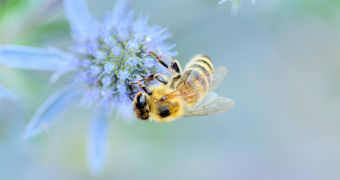Several years ago, farmers in the United Kingdom began noticing that their bee colonies were beginning to decline. Over time, the number of insects they had got reduced significantly, and the problem spread throughout the country, and into wild bee colonies. Scientists have been trying to come up with explanations and solutions to this problem ever since, but thus far their efforts have failed. Now, investigators in the United States say they may have found an explanation for what has been termed Colony Collapse Disorder (CCD), the BBC News reports.
In a presentation made yesterday, May 26, in San Diego, California, investigators at the US Department of Agriculture (USDA) said that the most likely cause for the collapse was a combination (“cocktail”) of deadly fungi and viruses, which had combined their actions to trigger this devastating effect on the insects. The findings were presented at the 110th General Meeting of the American Society for Microbiology (ASM 2010). According to USDA Agricultural Research Service researcher Jay Evans, whenever these classes of pathogens are combined, a major correlation with bee decline appears.
Infected colonies were discovered to contain a more marked presence of the fungus Nosema cerenae, US scientists say. In itself, the microorganism doesn't have the power to kill off entire bee colonies, but researchers say that it becomes very lethal when combined with a particular group of RNA viruses. Together, these pathogens can kill off as much as 90 percent of a colony in one fell swoop. The average colony bee death rate in the United States, for example, has been between 30 and 35 percent each year. “We've known for some time that the viruses are not good for the bees' health, that they cause some visible symptoms like paralysis of the bees, shivering or inability to fly,” Evans says.
He adds that setting up experiments to test the idea was relatively difficult. “You have to infect bees with a sort of natural level compared to what's going on in the field and then more or less wait around to see how that translates into a colony effect like a colony collapse or decline,” the expert explains. One of the most baffling results that came from the investigation is that CCD may actually spread among bees via flower pollen. This is very worrying, given that the insect rely on this stuff for their very survival.
“Without bees, our world would be a very dreary place to live. So many delicious fruits wouldn't be available and so many wonderful plants wouldn't be able to propagate and reproduce. A very dull and dreary place indeed,” concludes the head of BeeWeaver Apiaries Inc., Daniel Weaver.

 14 DAY TRIAL //
14 DAY TRIAL //